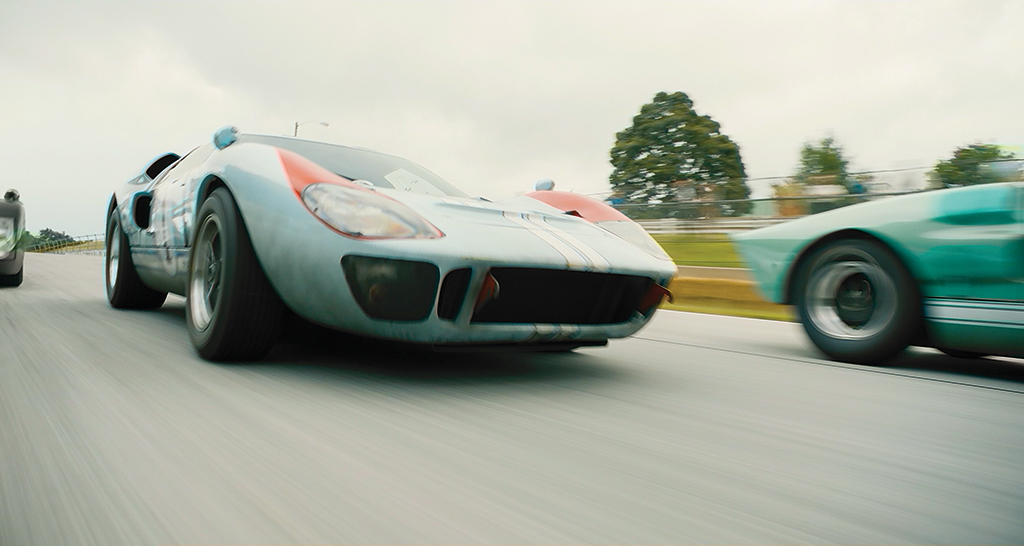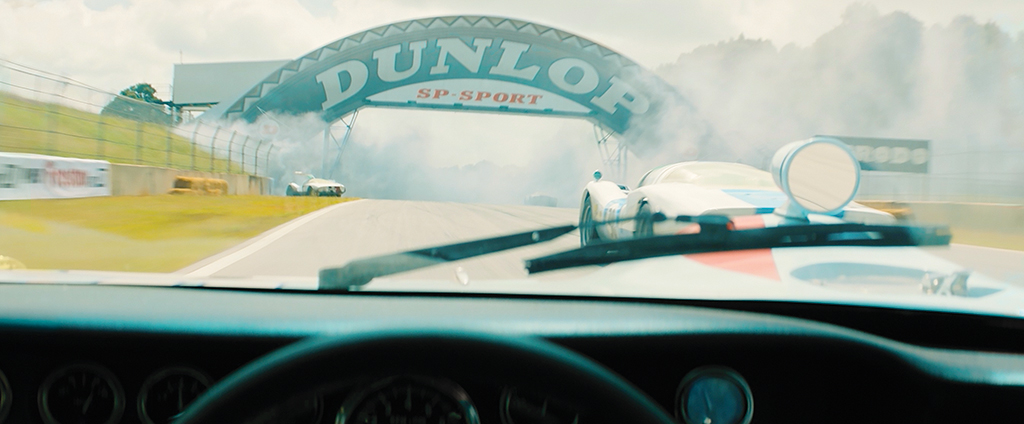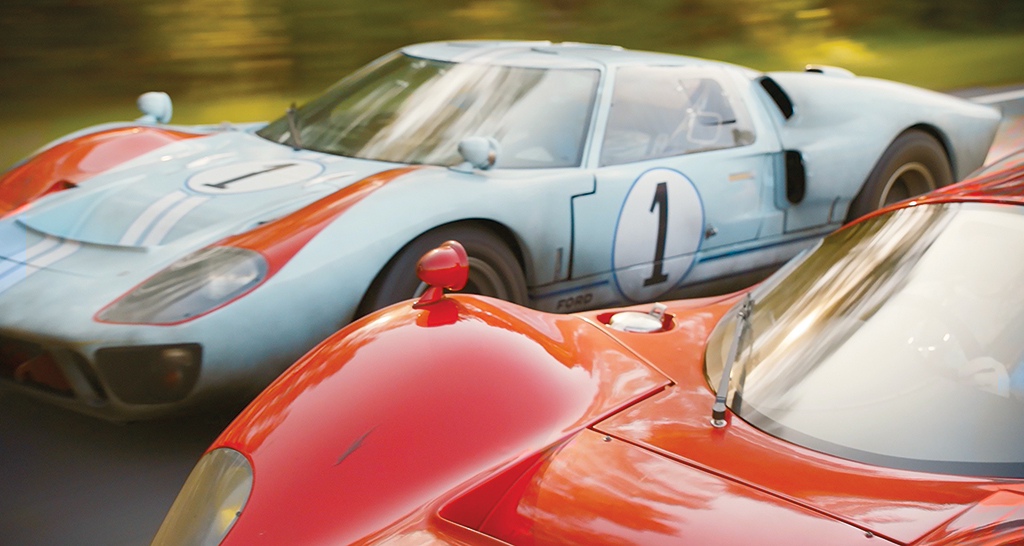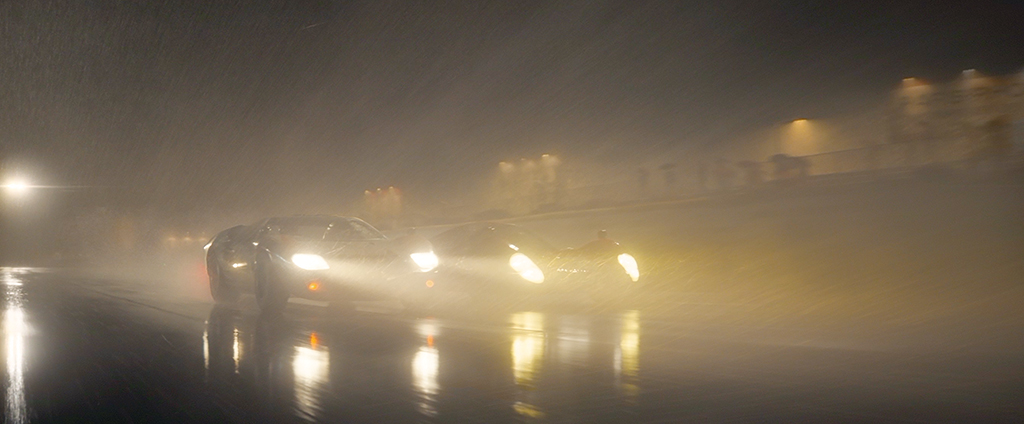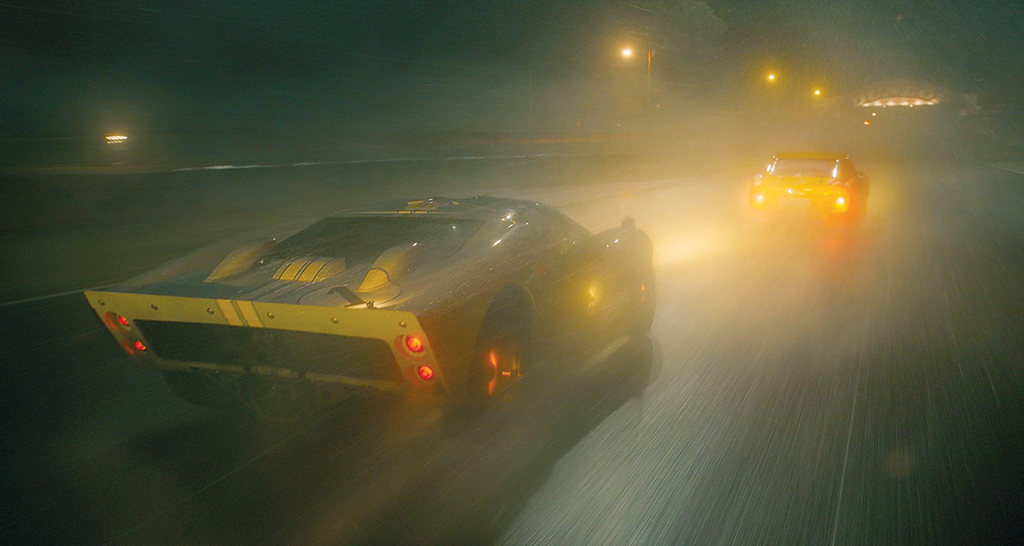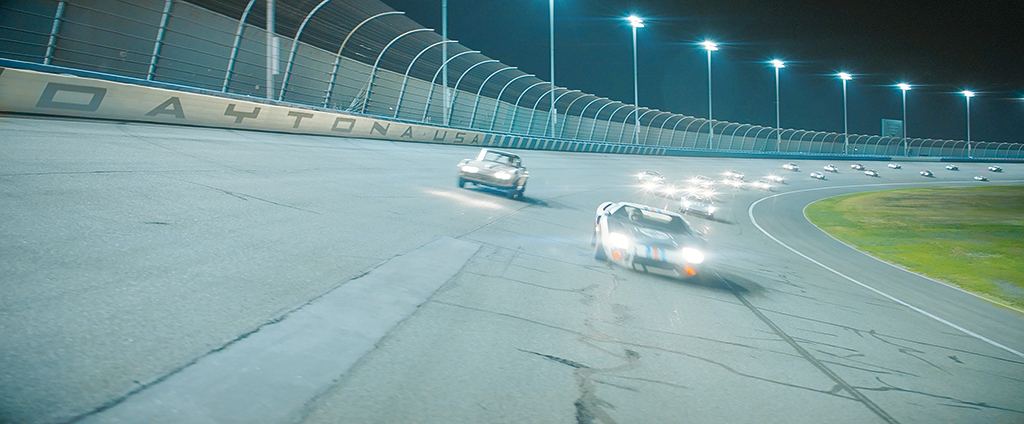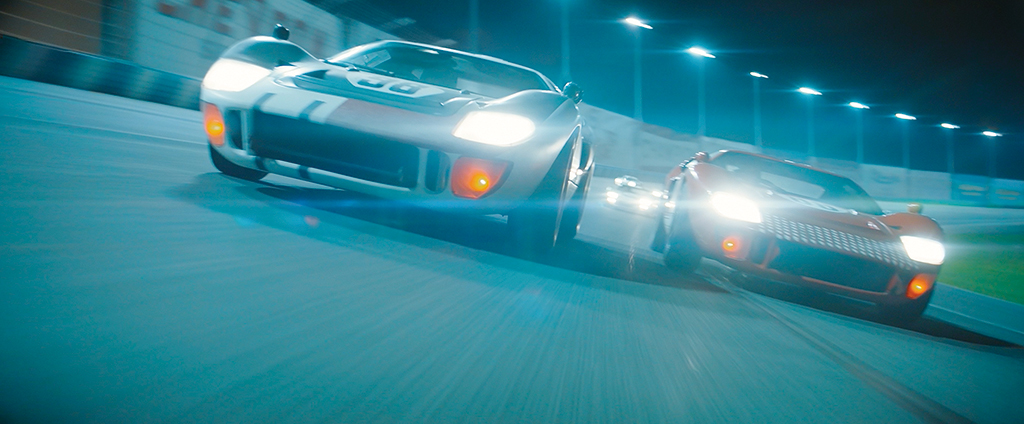By TREVOR HOGG
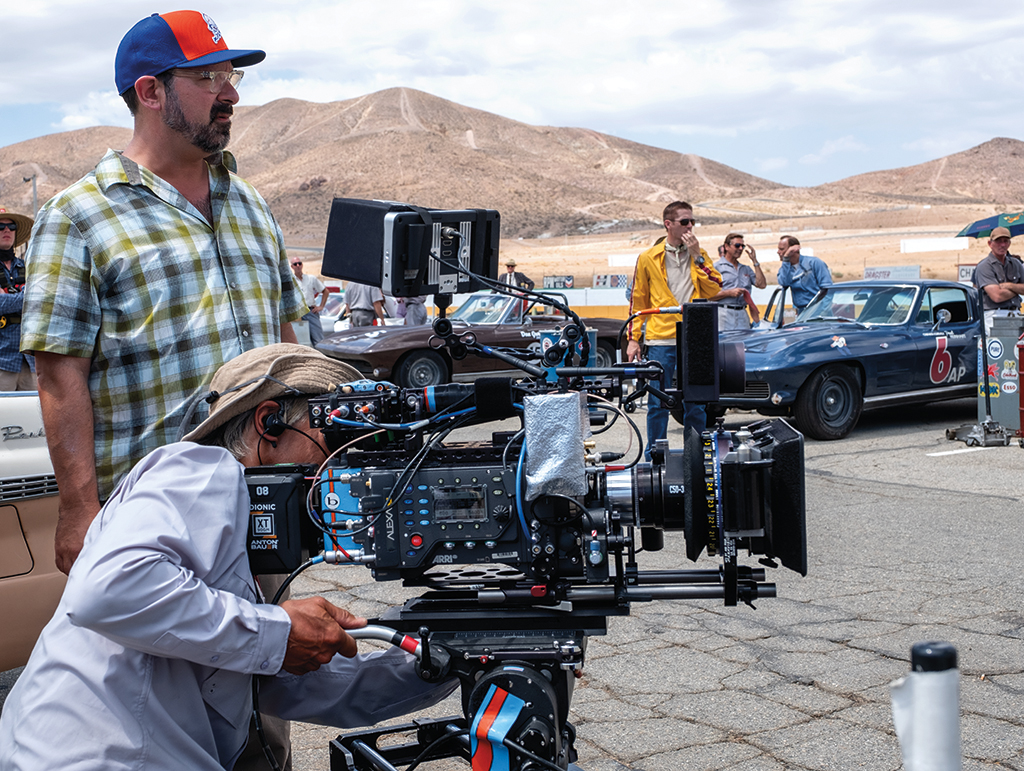
By TREVOR HOGG

As much as filmmaker James Mangold (Logan) believes in the old school mantra of capturing everything in-camera, he is not afraid to utilize digital technology to enhance the storytelling. Such is the case with Ford v Ferrari (or Le Mans ’66 in the U.K.), which depicts the efforts of American automobile designer Carroll Shelby (Matt Damon) and British driver Ken Miles (Christian Bale) to construct the Ford GT40 and beat Ferrari at the 1966 24 Hours of Le Mans race in France.
Extensive previs was created before the production actually started. “We had to build over 30 cars, so you need the previs to budget this kind of stuff, and to break it down into different rigs and specialty equipment,” explains cinematographer Phedon Papamichael ASC, GSC (Nebraska), who reunited with Mangold for their fifth collaboration. “Even for the car scenes, we shot the previs piece but always rolled additional footage. We’re looking for something to happen that is less designed and sterile, which becomes a useful moment in telling the story.”
The previs was essential in mapping out the Le Mans race, which is supposed to happen over a 24-hour period and encompasses almost an hour of screen time. “There is no single place to shoot the Le Mans track in France,” explains Mangold. “Le Mans doesn’t resemble at all what it was like in 1960s, which was a series of specific country roads that formed a loop. There is a long straightaway hemmed in by trees that’s called the Mulsanne Straight, plus the grandstand area. Le Mans itself was a Frankenstein’s monster of multiple locations sewn together.”
Locations were situated in Southern California and throughout Georgia. “To complete one lap in our movie you move through essentially four or five locations, and yet the physical relationship of all of the cars have to remain constant for it to be a continuous race. Then you had weather continuity at the same time, because in order to communicate that this is a 24-hour race I felt that we needed to have periods of rain, night, dawn, sunset and broad day.”
Visual effects were critical in fixing continuity errors. “[Visual Effects Supervisor] Olivier Dumont (The New Mutants) and his team were so great in assisting or adjusting our shots that we ended up getting them involved in a lot of them. Some of the shots were as simple as adjusting a clock to the right time. There were so many variables appearing in frame at any given moment that could deny the continuity, so there was a lot to deal with.”
Le Mans grandstands were the biggest build both practically and digitally. “I worked closely with production designer François Audouy (Logan), who had already gathered so much research,” states Dumont. “I also went to France to see how the track was for Le Mans.” A whole wall of 40-foot x 40-foot bluescreens were maneuvered from shot to shot. “The art department constructed three of the 12 buildings, and we didn’t have any grandstands on the other side of the track. Every year more bleachers were added, so we had to have fewer of them in 1959 compared to 1966. We had to pay attention to what existed at the time.”
Sometimes compromises had to be made. “We shot in Fontana for Daytona,” Dumont says. “Daytona has a big lake in the middle of it, whereas Fontana doesn’t. We pretended that we never see that part of it. We were free to come up with what we thought was good for the movie.” Assisting the production was the creation of singular environments. “Unlike your average Marvel or Star Wars movie where there are a myriad of locations and worlds, there are not so many of those in Ford v Ferrari,” notes Mangold. “It was more about creating one hyper-real world and allowing every crevice of it to feel real.”
Each of the departments were collaborative with one another. “François Audouy was concerned that the graphics be convincingly 1960s,” explains Visual Effects Producer Kathy Siegel (Maze Runner: The Death Cure). “He and a graphic designer took it upon themselves to spec out the whole run of pits with the correct signage so our vendors didn’t have to think what would have been here, or maybe make a mistake with a font that wouldn’t have been available then.”
One of the major difficulties was conveying high speed of the race cars. “If you run a car through a forest, 50 miles per hour looks like a 100,” notes second unit director Darrin Prescott (Baby Driver). “If you run a car through a desert at a 100 miles per hour, it looks like 50. The racetrack is a wide-open desert, so it gets hard to sell speed.” In order to compensate for the lack of foreground elements, low close-ups were taken of the vehicles with a wide lens as the camera dynamically moved among them. “James didn’t want to make this look like a car commercial. He wanted to keep within the style of the day. Back in the day they didn’t have Russian Arms and all of these great tools that we have now.” What has become the standard for speed on the big screen defies reality. “One of the areas visual effects have almost done a disservice is by always taking things to 10, which is the mantra in most visual effects-heavy popcorn movies,” states Mangold. “The speed in Ford v Ferrari isn’t at a ridiculous level. Part of it was finding ways to denote speed that are in the shot construction, and more about showing the road moving underneath the cars, the speed of the background out of the windows, vibrations, and that the camera is never in a place that it could never be on a car that was really moving that fast.”
“We had to build over 30 cars, so you need the previs to budget this kind of stuff, and to break it down into different rigs and specialty equipment.”
—Phedon Papamichael, Cinematographer, ASC, GSC
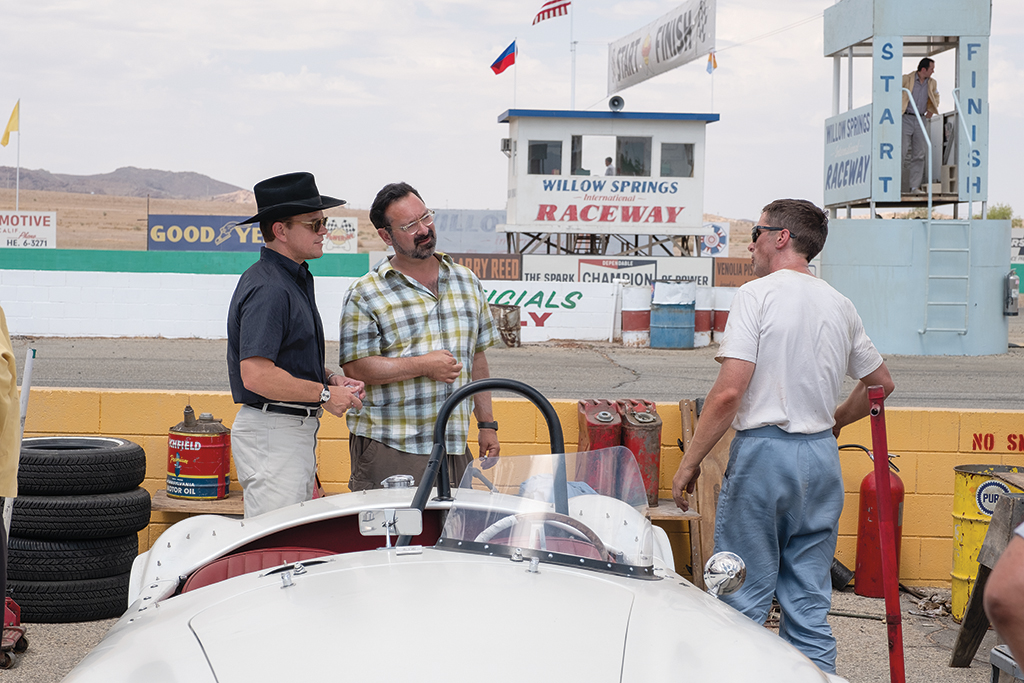
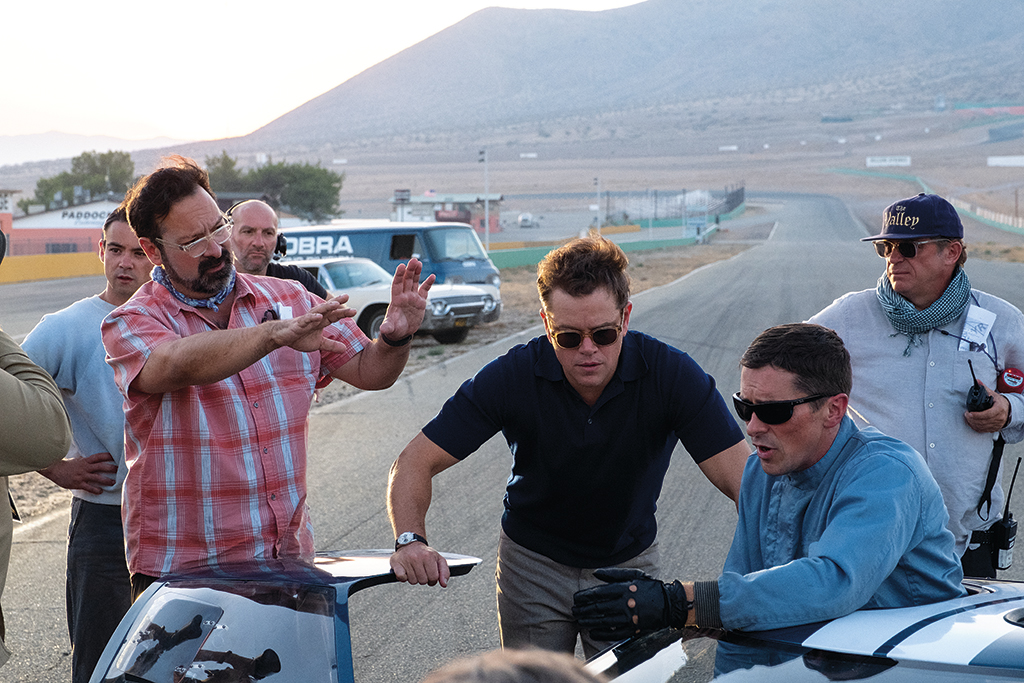
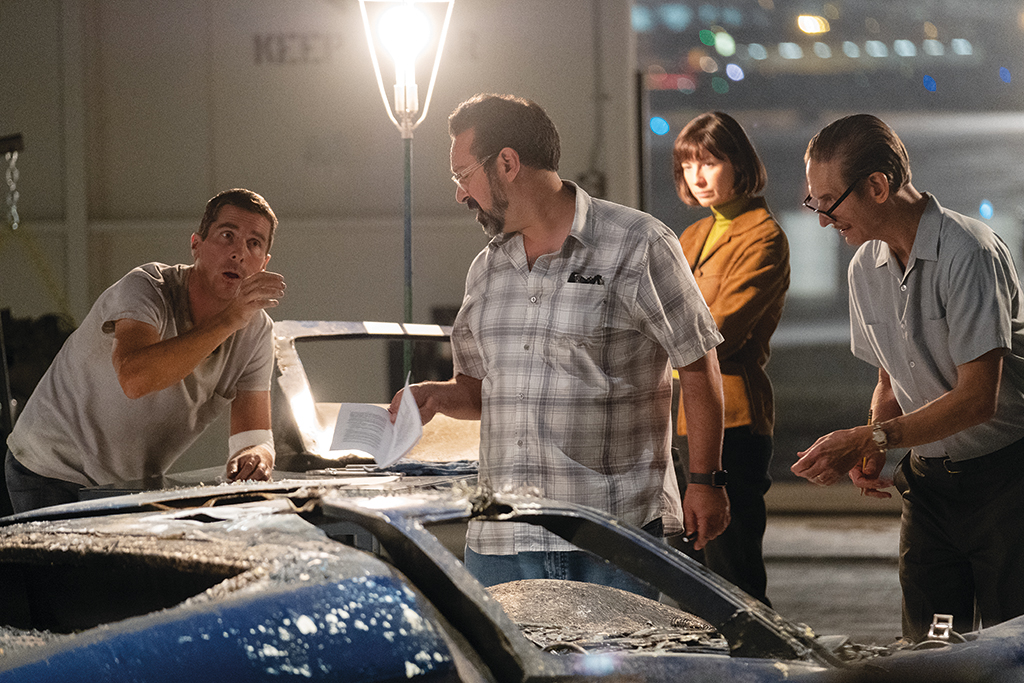
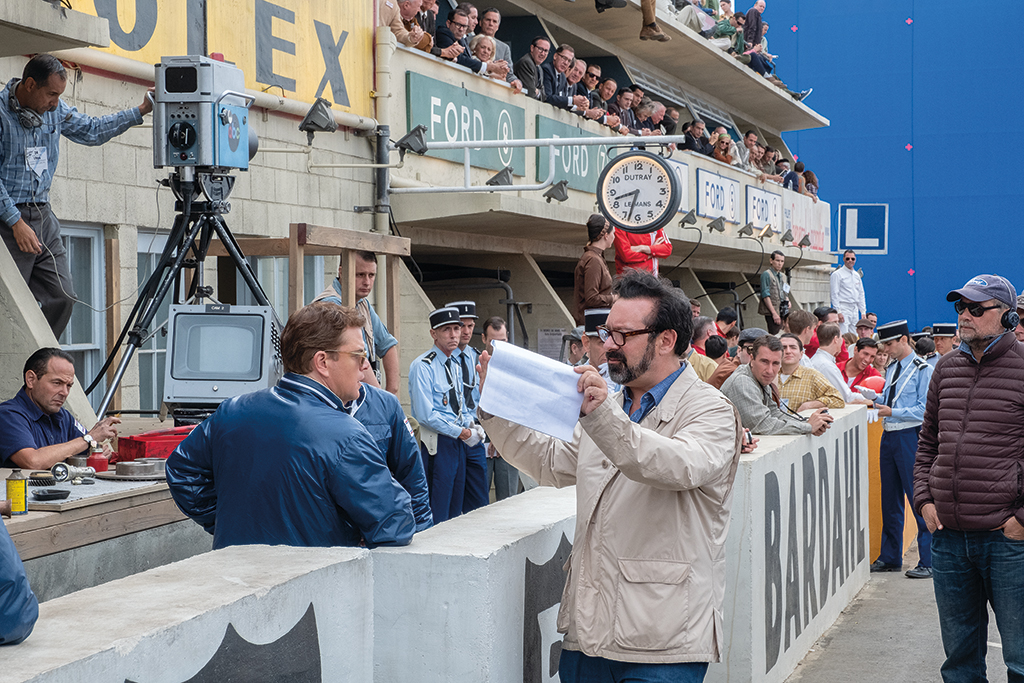
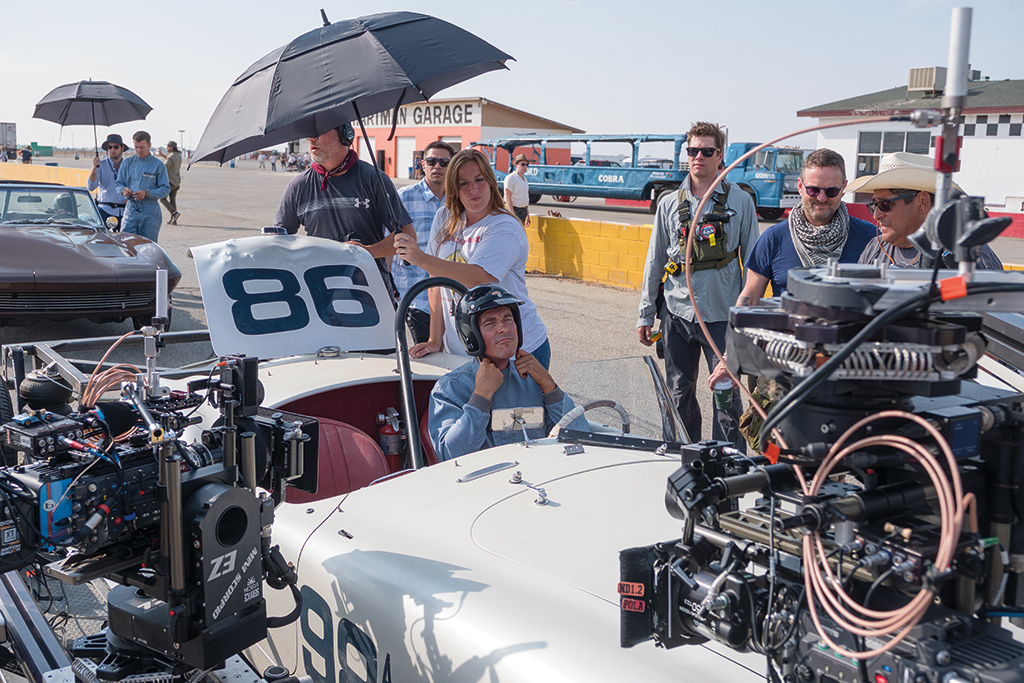
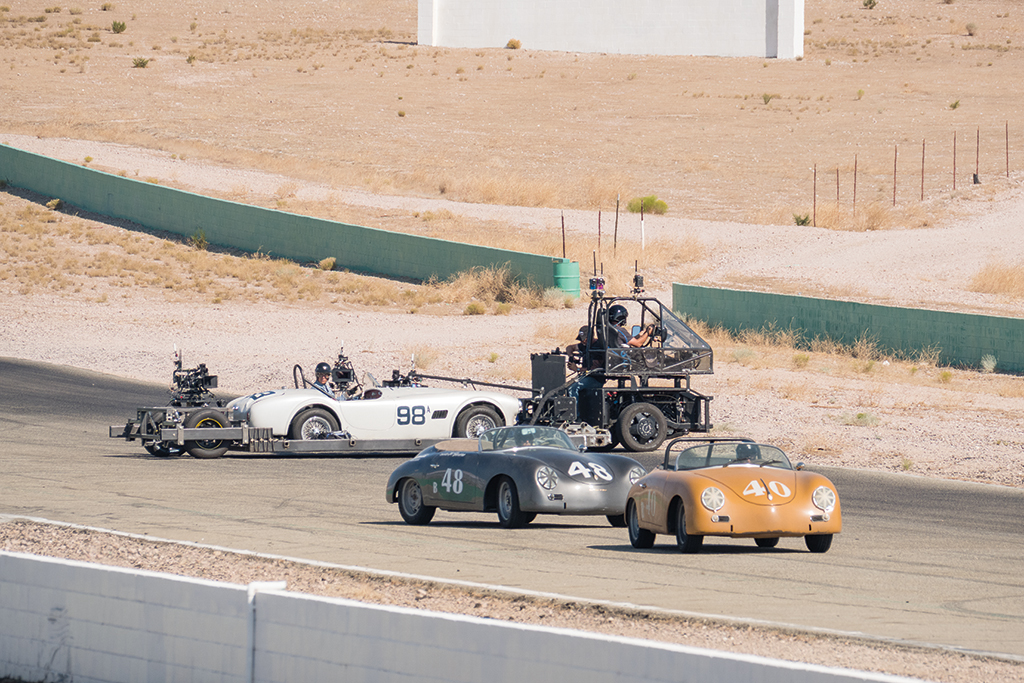
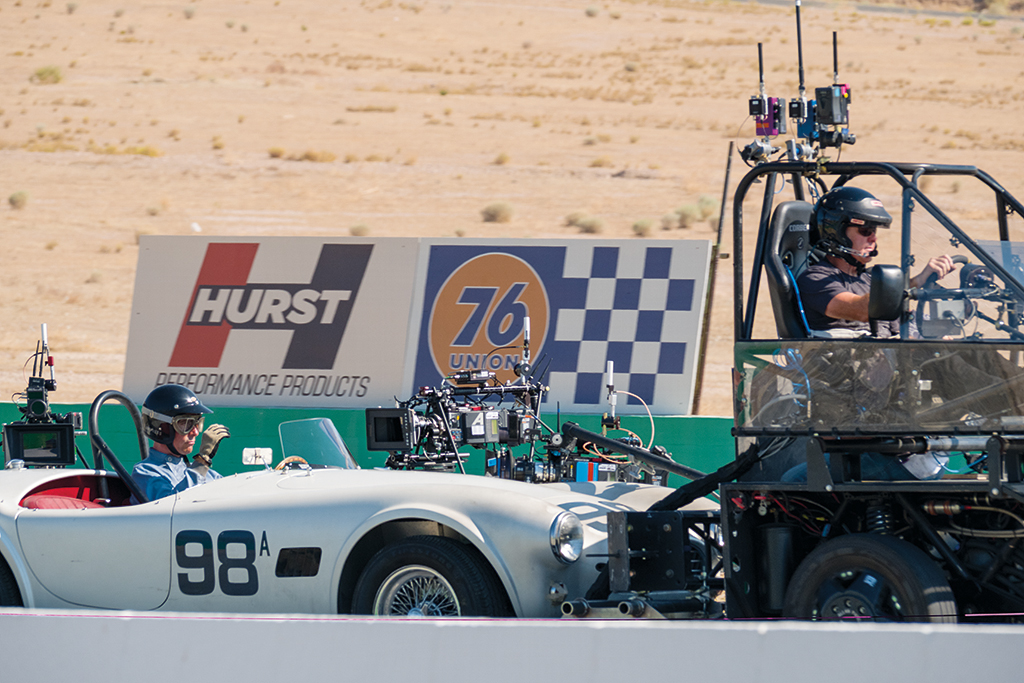
“[Visual Effects Supervisor] Olivier Dumont and his team were so great in assisting or adjusting our shots that we ended up getting them involved in a lot of them. Some of the shots were as simple as adjusting a clock to the right time. There were so many variables appearing in frame at any given moment that could deny the continuity, so there was a lot to deal with.”
—James Mangold, Director, Ford v Ferrari
“Unlike your average Marvel or Star Wars movie where there are a myriad of locations and worlds, there are not so many of those in Ford v Ferrari. It was more about creating one hyper-real world and allowing every crevice of it to feel real.”
—James Mangold, Director, Ford v Ferrari
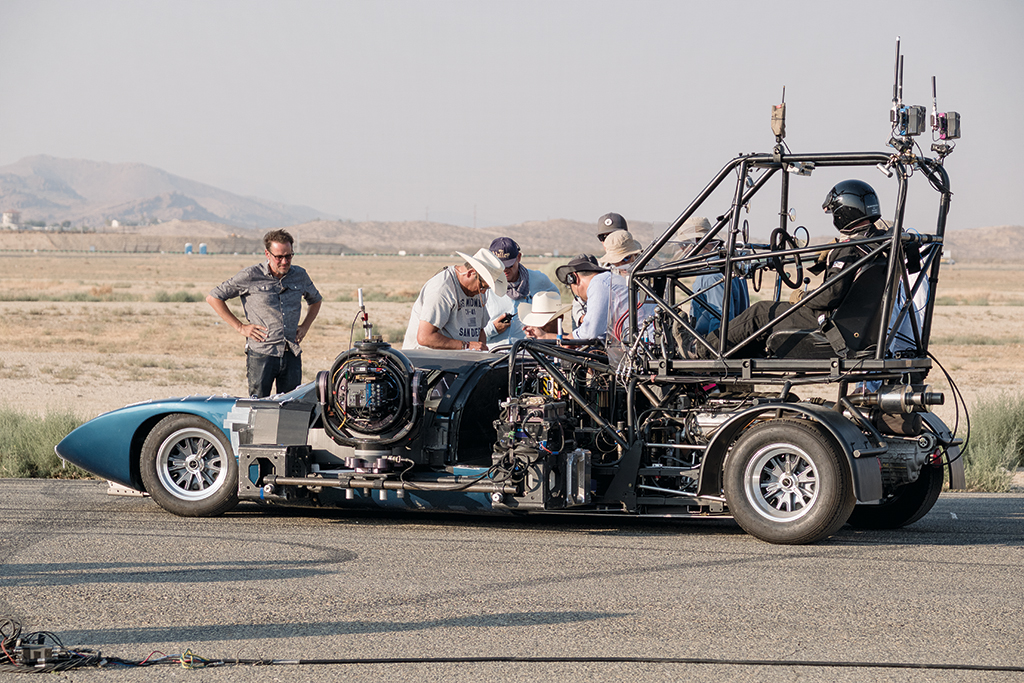
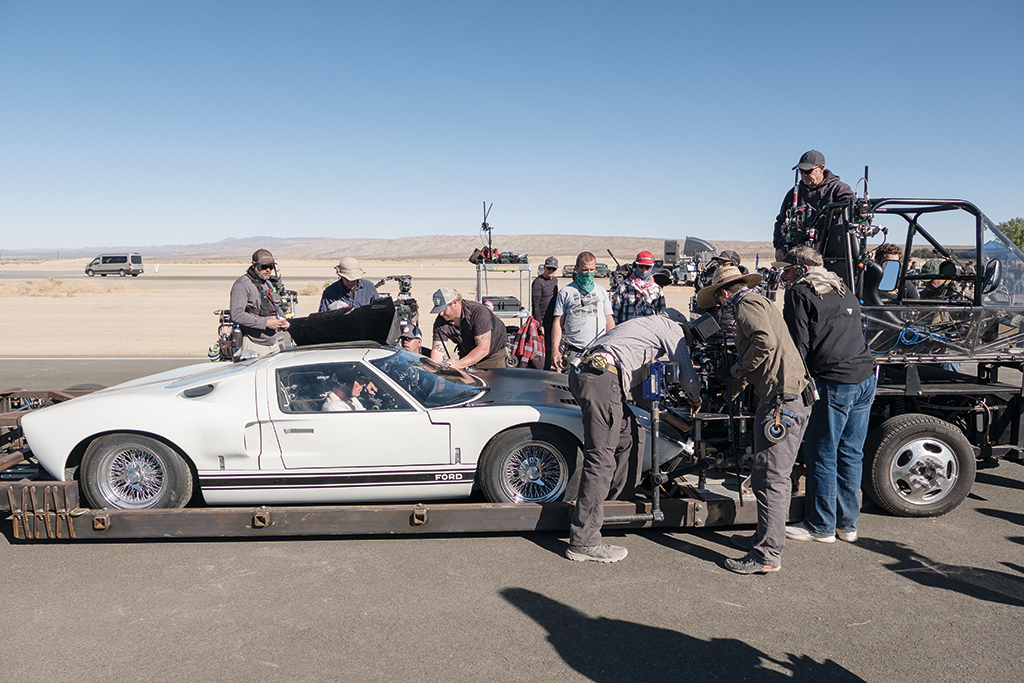
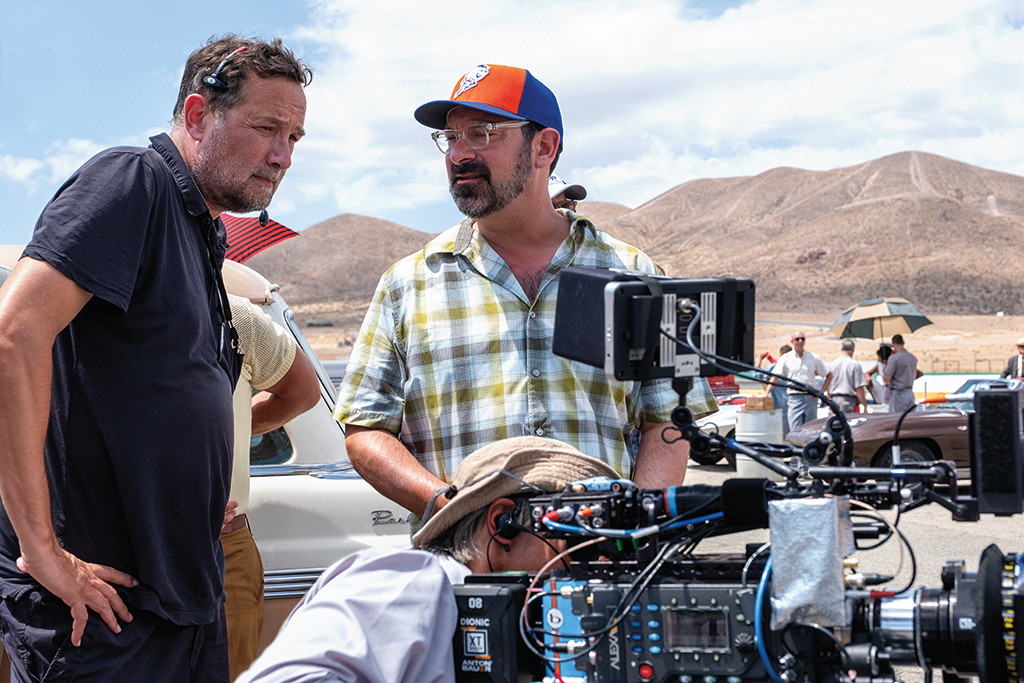
Precipitation was produced in CG. “We had to shoot with water on the road when we were supposed to have rain,” recalls Dumont. “I decided at one point to forget about the rain because we had to speed up all of the shots, and water was going to get in the way. We had to make sure that we had a good setup to add the rain for a good chunk of the Le Mans race.”
Re-speeding the imagery was not a simple process. “It’s a lot more complicated than just saying we’re speeding up the shot per se,” explains Mangold. “It’s very often about seeing what elements need to be sped up or what denotes speed, and lastly sound is a huge influence on all of this and how it carries the cuts.”
The other big challenge was making Los Angeles and Georgia looking like Le Mans. “The vegetation is different,” remarks Dumont. “Trees always feel yellow and warm when you shoot in Los Angeles. Whereas in Le Mans, they’re pine trees, so there’s a blue color that needs to be present there. I was always trying to get that going.” Throughout the imagery, modern elements such as cellphone towers had to be painted out. “For instance, when we shot the GT40 test drive in Los Angeles it was supposed to take place in Dearborn, Michigan, where there were trees all round at the time. We had to paint out a lot of the buildings.” CG extensions augmented the Ford factory set. “We have some full CG shots where we’re looking through a window at the factory. It’s a discussion between Henry Ford II (Tracy Letts) and Shelby. We also had the establishing shot of the Ford headquarters. Inside the factory, the foreground elements were always practical, but we extended the rest.”
Numerous car interiors were captured with some of them being on a soundstage with a shell of a car placed on an air cushion to get the necessary vibrations. “Even when we were shooting outside, which is always the best way to do it, we had to replace the background because we were shooting in Agua Dulce and were surrounded with hills,” remarks Dumont. “We had to have a Le Mans-style background outside. We had a specially designed car called the Frankenstein, which was just a shell with roll cages. We could put cameras anywhere on it in order to shoot the right angles. This was where the previs was useful. James worked on shot list for the second unit to shoot all of the car stunts.” An array of six ALEXA Mini cameras were placed on the vehicle. “On top of the car I installed an Insta360 Pro camera that could grab the full environment at once. I used that for HDRI and the LED panels.”
A lot of the location car interiors were done on a biscuit rig (also referred to as a pod car), which is a drivable process trailer. “You’re basically out on location, doing all of your exterior drive-bys and have the actors in the hero car on this rig that drives like a race car,” remarks Prescott. “It’s unbelievable. I remember back on The Bourne Ultimatum we put Matt [Damon] inside this thing called the GO Mobile, and he called it the ‘no acting required vehicle’ because you feel like you’re actually racing around this canyon.”
Vintage Panavision C and T series anamorphic lenses were customized to cover the large sensor of the ARRI ALEXA LF. “We needed numerous lenses because we had a lot of different mounts that were being run simultaneously on the car,” explains Papamichael. “It was important for us that we try to do as little as possible onstage and greenscreen, with the exception of some specific beats that are extreme close-ups on Christian during the final race. Everything is hard-mounted to the car seated on the pod car driven by a stunt driver. Christian is being catapulted around with the actual G-forces going into these curves with all of the interactive light. We were trying to go at the correct speeds where you feel the cheeks moving, and the vibration of the body and camera gets transmitted to the frame. You can’t fake that on the stage.”
A big crash occurs at the start of the Le Mans race, which is shown from the point of view of the drivers. Recalls Prescott, “We had this drivable cannon that went 70 miles per hour, which drove with the shell of the car on it, and at a certain point launched the shell like 300 feet. The shell would then hit the ground in front of the Frankenstein.
“We were hoping to get the shell to bounce in-camera,” Prescott continues, “but it never did exactly what we wanted it to do. You start trying to figure out the physics and dynamics of these crashes. There’s just so much going on in milliseconds it’s hard to recreate them a lot of times. In that sequence, we took the best bits of the actual live-action crash, and then Olivier took over, really dialed that thing in and made it land where we wanted it to be.”
Critical to completing the visual effects shots during the post-production period was having a quick editorial turnover. “James and our post-production supervisor, Aaron Downing (The Greatest Showman), were helpful with the turnovers,” notes Siegel. “I had expected a director of James’ caliber and narrative quality to hold onto the shots longer, but he understood that getting shots out would make them better. He was receptive to the idea of sending out look development shots during the shoot and pulling shots with Olivier that would help the vendors to start to build their environments and allowed them to feel comfortable when the shots came in.”
A good percentage of look development shots made it into Ford v Ferrari. “We talked with editor Michael McCusker (Walk the Line), Visual Effects Editor John Berri (Deadpool 2) and James about the shots that they loved,” Siegel recounts. “We were able to pull 25 to 30 shots early, which allowed us to show James tests and models while shooting was still taking place. John is skilled at After Effects, so he was helpful doing tests for previews, showing us lineups, giving us temp shots ideas, and translating Michael’s and James’ ideas to us.”
Method Studios was the main vendor and looked after Le Mans. Rising Sun Pictures dealt with Daytona, and additional support was provided by The Yard VFX. “The show got a lot bigger,” states Siegel. “We initially bid 621 shots and were 1,048 at delivery.” Even the gauges on the dashboards became full CG shots in order to have more control of the imagery. “We added a lot of shake and pull out to get the right frequency,” remarks Dumont. “It was mostly a continuity thing between shots in the cut.”
A safety issue needed to be addressed with a digital solution. “The stunt drivers were wearing helmets way bigger than the ones that everybody was wearing in the 1960s. It wasn’t just face replacements,” adds Dumont. “We also had to change the helmets in a lot of shots.” Skid marks were added to show how fast the race cars were leaving the pit, “but we also had to remove them from the previous day.” The heaviest simulation was the rain. “You have to analyze the rain. How does that work visually? At a certain distance you see the drops, but after that it becomes misty. You have to look at that to know when you can switch to 2D elements.”
Ford v Ferrari covers the full range of visual effects. “The story is so good and is so well directed that you have to look at it as a whole experience,” believes Dumont. “I always felt the movie was a reverse Saving Private Ryan,” states Mangold. “It ends with a 40-minute race sequence, but the movie builds towards that as the audience follows this group of characters who are brought together when Ford decides to get into racing. It’s what’s missing in a lot of action films these days. We have all of this sound and fury, and these incredible images that visual effects and modern technology can produce, but very often I find the only thing that is holding me to the film is the sound and fury.”
Concludes Mangold. “What I can’t wait for is that nexus between the emotional investment the audience has made in the characters and how much more the action means to you. I didn’t want my effects and sound teams showing off so much that it started to cross the boundary into the comic book aesthetic. I wanted this to feel much more influenced and of a [period] piece, like the original Le Mans film with Steve McQueen, or Grand Prix. We put all of our effort into making it feel that everything is 100% real.”
“One of the areas visual effects have almost done a disservice is by always taking things to 10, which is the mantra in most visual effects-heavy popcorn movies. The speed in Ford v Ferrari isn’t at a ridiculous level. Part of it was finding ways to denote speed that are in the shot construction, and more about showing the road moving underneath the cars, the speed of the background out of the windows, vibrations, and that the camera is never in a place that it could never be on a car that was really moving that fast.”
—James Mangold, Director, Ford v Ferrari
